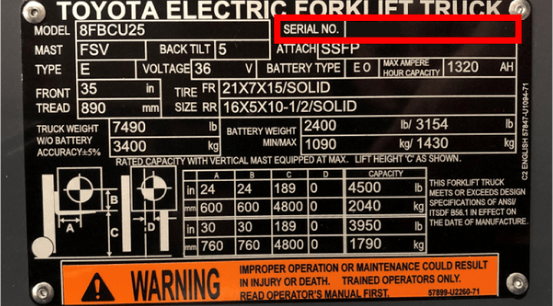Counter-Balanced Forklifts and The Forklift Load Center: A Consideration of Gravity

Forklifts must be powerful and tough to endure the tough settings they operate in.
However, as powerful and tough as they might be, they are by no means exceptions to the laws of gravity. A counterbalanced forklift is, in a way, a machine of ratio and proportion, operating similarly to a seesaw. A forklift has a fulcrum and two resistances: the counterweight on the back of the forklift and the load on the forks. The middle of the load is considered the load center when the load is evenly distributed across the pallet.
According to OSHA, “The load center is the distance from the face of the forks to the load’s center of gravity.” It is essential for operators and managers to understand the center of gravity of the forklift load in order to operate and transport loads safely in their operations. The most common load is a 48-inch by 48-inch pallet. The center of that pallet is 24 inches, which is the pallet’s load center, assuming the load is equally distributed across the pallet. 24 inches is the most common load center, but 36-inch and 48-inch forklift load centers are also fairly common.
The Forklift Fulcrum
The fulcrum is the central pivot point of a seesaw. The front axle is the fulcrum of the forklift where the counterweight and the load find balance. The only major difference between a forklift and a seesaw is that the forklift counterweight should always provide more force than the load so the forklift does not tip forward. The fulcrum is the dividing line between the weight of the load and the weight of the forklift.

Understanding Forklift Load Center Using the Forklift Data Plate
Manufacturers provide a data plate for every new forklift. The data plate contains important information about the forklift, such as load capacity at a specified load center, fuel type, weight, lift height, among other data points. Ignoring load center guidelines or installing an attachment without notifying the manufacturer can put you, your operators, and your business at risk of damage to the forklift, accidents, and injuries. Be sure to notify the manufacturer and request a new data plate to adjust the metrics to the changes made to the forklift.
Tips Involving Forklift Load Center of Gravity
There are complex mathematics and physics equations involved in calculating forklift load center and understanding how the load center can affect the lift capacity and de-rating the capacity. To keep it simple, here a few tips when considering the forklift load center:
- Lifting and transporting loads unevenly on the forks and beyond load center listed on the forklift data plate can exceed the actual capacity of the forklift, making the forklift vulnerable to tipover. Be sure to evenly distribute the weight of the load before lifting the load. This is true for both horizontal axes on the forklift. A load that is distributed toward one fork increases the risk of lateral tipover.
- Be sure to slide the load all the way to the load back rest of the forklift. The further the load is away from the load back rest, the more you increase the load center.
- If you want to install an attachment to the forklift, contact the local OEM dealership of your forklift to install. The dealership can streamline the process for getting a new data plate with the new metrics.
Toyota Forklift offers customers a wide selection of sit down counterbalance forklifts.


